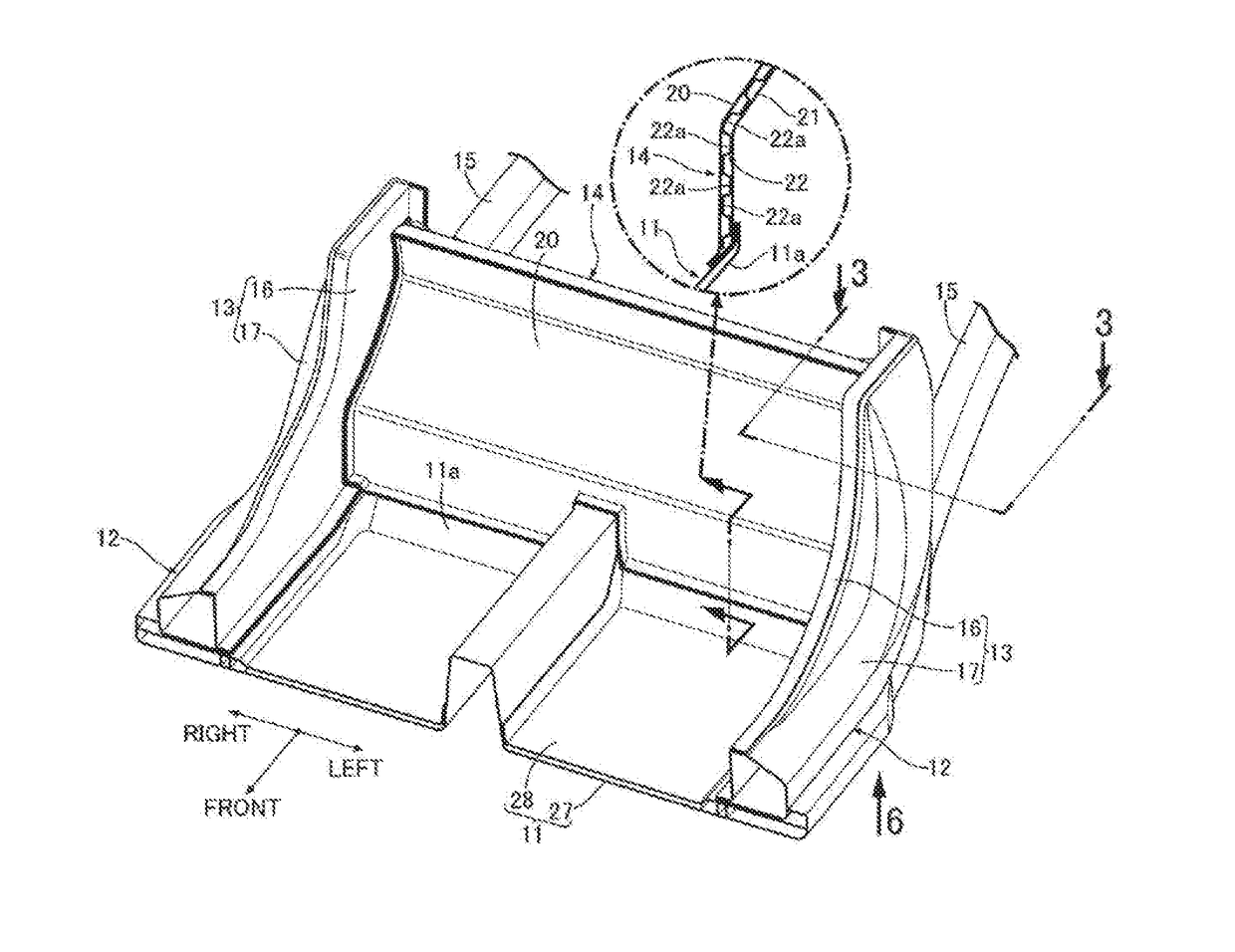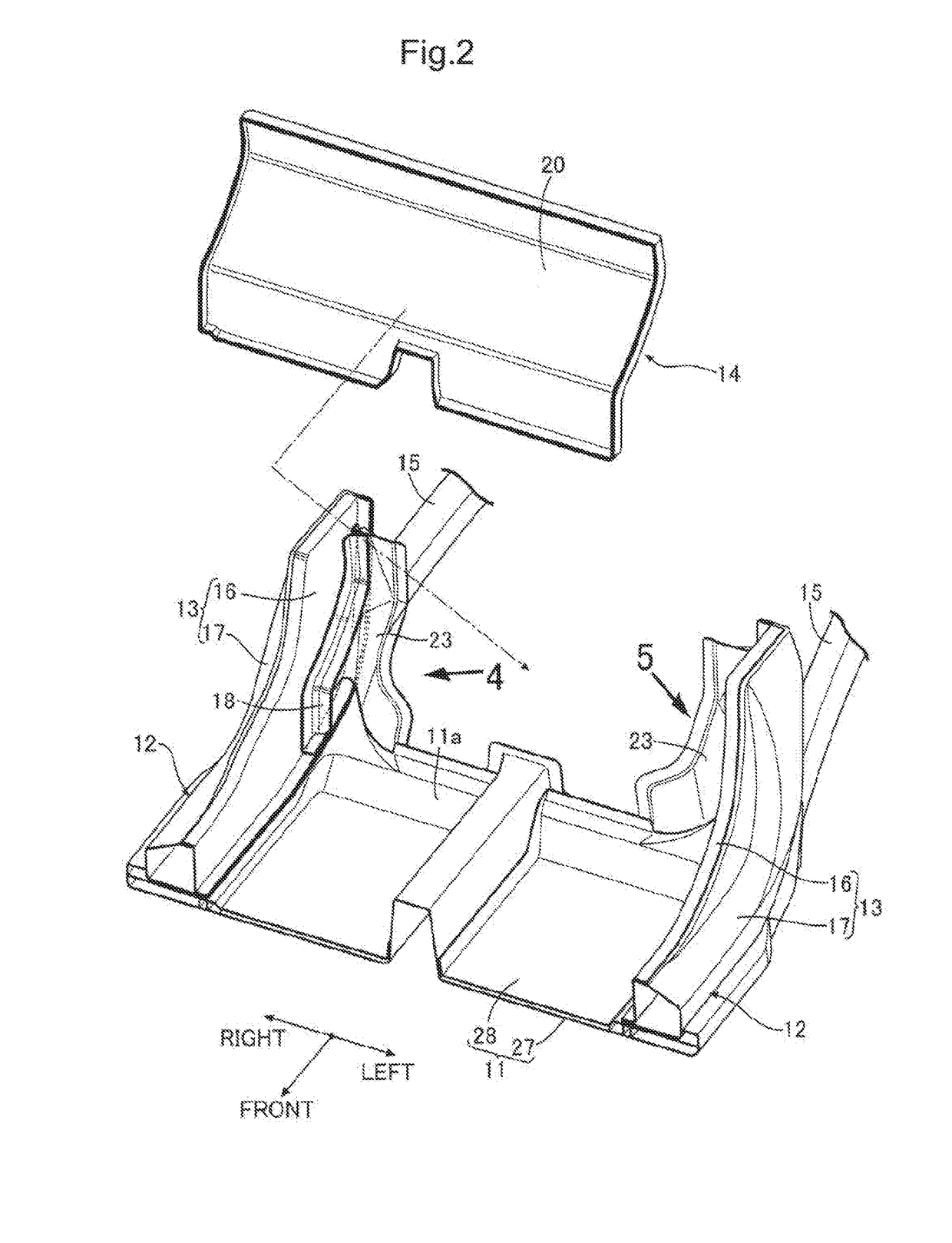Vehicle body structure
a technology for vehicles and body parts, applied in vehicle components, superstructure sub-units, transportation and packaging, etc., can solve problems such as productivity drop, and achieve the effects of preventing local destruction, reducing stress on side walls and standing walls, and reducing stress on standing walls
- Summary
- Abstract
- Description
- Claims
- Application Information
AI Technical Summary
Benefits of technology
Problems solved by technology
Method used
Image
Examples
first embodiment
[0032]An embodiment of the present invention will be described below with reference to FIGS. 1 to 7. Further, a front-rear direction, a left-right direction (vehicle width direction) and a vertical direction in this specification are defined on the basis of an occupant seated in a driver's seat.
[0033]As illustrated in FIG. 1, an vehicle body basically made of carbon fiber reinforced resin (CFRP) includes a pair of left and right side sills 12 and 12 extending in the front-rear direction along both left and right side portions of a floor panel 11, and a pair of left and right rear pillars 13 and 13 which stand rearward and upward from the rear ends of the side sills 12 and 12 of the floor panel 11. The left and right side edges of the back panel 14 standing up from the rear end of the floor panel 11 is joined to the inner surface of the left and right rear pillars 13 and 13 in the vehicle width direction. A pair of left and right metal rear side frames 15 and 15 extends rearward from...
PUM
 Login to View More
Login to View More Abstract
Description
Claims
Application Information
 Login to View More
Login to View More - R&D
- Intellectual Property
- Life Sciences
- Materials
- Tech Scout
- Unparalleled Data Quality
- Higher Quality Content
- 60% Fewer Hallucinations
Browse by: Latest US Patents, China's latest patents, Technical Efficacy Thesaurus, Application Domain, Technology Topic, Popular Technical Reports.
© 2025 PatSnap. All rights reserved.Legal|Privacy policy|Modern Slavery Act Transparency Statement|Sitemap|About US| Contact US: help@patsnap.com



